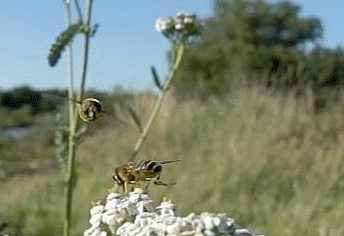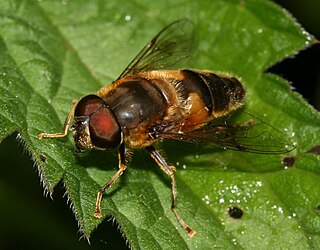
Eristalis pertinax is a hoverfly in the family Syrphidae. It was first described by Giovanni Antonio Scopoli in 1763 and is found in Asia and Europe. Like Eristalis tenax, the larvae of E. pertinax are rat-tailed maggots living in drainage ditches, pools around manure piles, sewage, and similar places containing water with high organic load and low oxygen concentration.

Eristalis arbustorum, the European drone fly, is an abundant Northern Hemisphere species of syrphid fly, originally officially described by Linnaeus in 1758 as Musca arbustorum. The name "drone fly" is related to its similar appearance to the drone of the honeybee. Hoverflies get their names from the ability to remain nearly motionless while in flight. The adults are also known as flower flies as they are commonly found on and around flowers from which they get both energy-giving nectar and protein rich pollen. The larvae are aquatic filter-feeders of the long-tailed type.
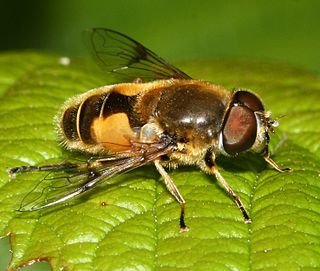
Eristalis horticola is a Palearctic species of hoverfly.
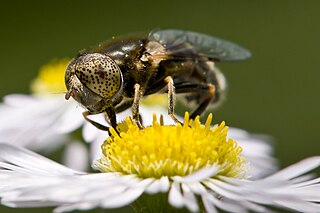
Eristalinus aeneus, the common lagoon fly, is a fairly common species of syrphid fly observed throughout the United States and Europe. Hoverflies can remain nearly motionless in flight. The adults are also known as flower flies for they are commonly found on flowers, from which they get both energy-giving nectar and protein-rich pollen. The larvae occurs along shorelines in rock pools containing large amounts of decaying seaweed.
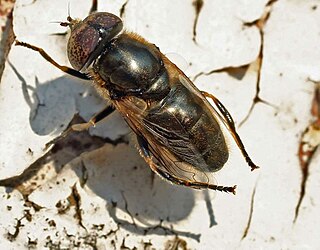
Eristalinus sepulchralis is a European species of hoverfly. The species are brownish-white from a close up, and look like a wasp. From a distance though, they are yellowish-black coloured, and look like a bumble bee. The species can be found throughout Europe in the Baltic states, North Europe, Central, Southern and Western Europe and across the Palaearctic to Kamchatka, Japan, China and India. Finland, Great Britain, Hungary, Ireland, Norway, and the Netherlands.

Eristalis intricaria, sometimes called the furry dronefly, is a European species of hoverfly. It is a furry bee mimic, superficially resembling Merodon, though Merodon have all black leg tibiae, as opposed to partly yellow. E. intricaria is somewhat variable in colour pattern, and some attempts at naming varieties have been tentatively made. Flight time of adults in the UK are from March to September. It is generally widespread, but is seldom seen in large numbers. Habitat is woodland or marshland.
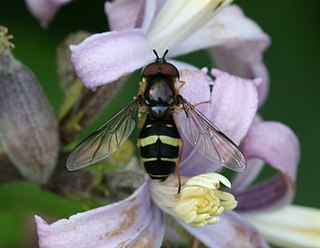
Dasysyrphus tricinctus is a European species of hoverfly in the genus Dasysyrphus, a member of the family Syrphidae. It is found across Europe, although reported in highest density from the British Isles and Scandinavia. While not uncommon it is generally only seen in modest numbers, typically in lowland woods with peak numbers in late May and early June and again in late August and early September.

Dasysyrphus venustus is a Holarctic species of hoverfly.
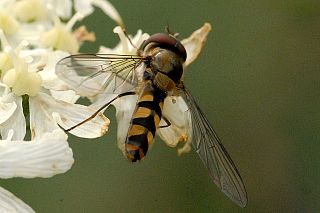
Meliscaeva auricollis is a West Palearctic species of hoverfly.

Eristalis abusiva is a European species of hoverfly. It is similar to Eristalis arbustorum.
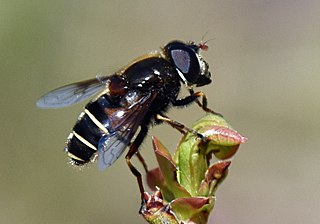
Eristalis cryptarum is a holarctic species of hoverfly. Known as the bog hoverfly or bog-dwelling drone fly, it is a bog specialist but may occur in other wetlands. Its larvae are assumed to live in peat that is saturated with water, such as that found in these boggy areas. The female has been observed depositing eggs on and close to very fresh cow dung along oligotrophic seepages in moorland.
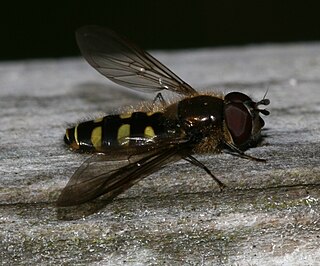
Melangyna lasiophthalma is a Holarctic species of hoverfly.

Epistrophe grossulariae is a Holarctic species of hoverfly.
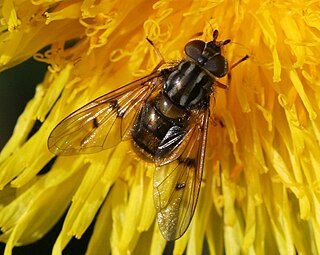
Ferdinandea cuprea is a European species of hoverfly notable for its brassy abdomen. The larvae have been found in sap from trunk damage on oak and ash.
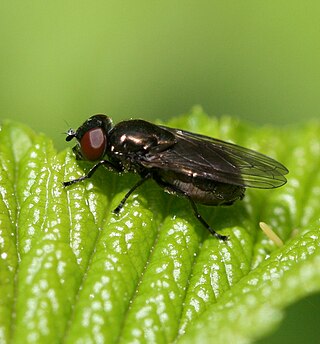
Melanogaster hirtella is a European species of hoverfly.
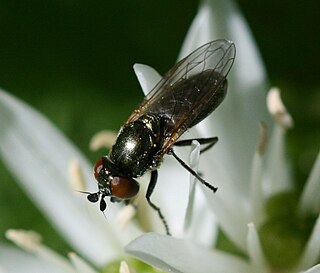
Lejogaster metallina is a Palearctic species of hoverfly.

Parasyrphus vittiger is a species of hoverfly, from the family Syrphidae, in the order Diptera.
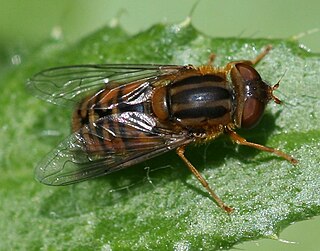
Parhelophilus versicolor is a European hoverfly.
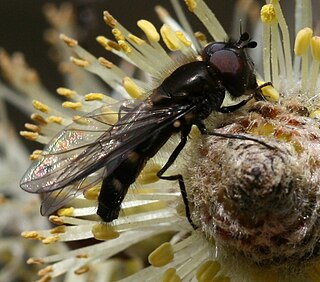
Melangyna quadrimaculata is a European species of hoverfly.

Xylota florum is a Palearctic species of hoverfly.

